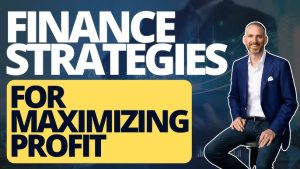Introduction
Many millennials find themselves grappling with various forms of debt—student loans, credit cards, personal lines of credit—and it can feel like an uphill battle. Faced with rising living costs, stagnant wages, and the lingering effects of the pandemic, this generation carries heavier debt loads than those before them. Yet, with thoughtful planning and disciplined execution, paying off debt fixed interest rates doesn’t have to be overwhelming. By adopting clear-cut smart finance strategies, you can chip away at what you owe, reduce interest costs, and set yourself on a path to financial stability. In this article, we’ll reframe the conversation around debt management by exploring seven practical tactics designed specifically for millennials. Each approach is intended to give you greater control over your money and your future.
What Is Debt Management and Why It Matters

Debt management means taking deliberate steps to organize, prioritize, and repay what you owe. Rather than reacting to bills as they arrive, you proactively map out a repayment plan, track your progress, and adjust when life throws curveballs. Effective debt management does more than shrink your outstanding balances—it positively affects your credit score, unlocks access to lower‑cost loans (like mortgages or auto financing), and reduces the stress associated with money matters. For millennials, who may be saving for first homes or starting families, keeping debt in check is critical to achieving both short-term goals and long-term wealth building.
7 Smart Finance Strategies for Managing Debt

1. Set Up a Simple Budget
A budget shows where your money goes each month. List all sources of income first. Next, list all expenses: rent, bills, food, and fun. Compare totals. If expenses exceed income, find areas to cut back. Maybe cook more and dine out less. Redirect the savings to your debt. Keep your budget clear and easy to follow. Try tracking apps or a plain spreadsheet. Review it weekly. A good budget puts you in the driver’s seat of your money.
2. Attack High‑Interest Debt First
Not all debts cost the same. Credit cards often charge over 20 percent interest. Student loans and personal loans may charge less. Pay extra on the highest‑rate debt first. Continue minimum payments on other debts. When the worst debt is gone, move to the next. This method saves you the most on interest. It also speeds up your path to zero balances. Stay consistent, even if progress seems slow. Every dollar counts.
3. Combine Debts with Care
Debt consolidation rolls several debts into one loan. Aim for a lower interest rate than you currently pay. Options include personal loans, balance‑transfer cards, or home equity loans. Lower rates mean smaller payments or faster payoff. But watch the fees! A 3 percent loan fee might wipe out your savings. Only consolidate if you don’t add new debt. Treat consolidation as a tool, not a fix-all.
4. Build a Small Rainy‑Day Fund
Unexpected costs can derail any repayment plan. A leaky roof, car trouble, or medical bill can show up without warning. An emergency fund keeps you from using credit in a crisis. Start by saving a small amount each payday. Aim for at least three months of basic living costs over time. Keep this fund in an easy‑access account. Even $500 can be a strong buffer. With this in place, you stay on track with your debt plan.
5. Refinance for Better Rates
Refinancing swaps an old loan for a new one at a better rate. This works well for mortgages and student loans. A lower rate cuts interest costs and may lower your monthly bill. But beware of losing loan perks. Federal student loans include income‑based plans and forgiveness options. If you refinance them privately, you lose those benefits. Always compare offers and read the fine print before you switch.
6. Talk to Your Lenders
If payments become unmanageable, talk with your creditors. Explain your situation. Many lenders have hardship programs. They can pause payments, reduce interest, or waive fees. Be honest about what you can afford. A simple call or email could buy you time. In some cases, you can negotiate a lump‑sum settlement for less than you owe. However, settlements can hurt your credit score. Use this option only when you have no other choice.
7. Strengthen Your Credit Score
A higher credit card debts score unlocks better loan rates and credit cards. To boost your score, always pay at least the minimum on time and improve your credit. Keep credit‑card balances under 30 percent of your credit limit. Avoid opening many new credit account at once. Check your credit report yearly for errors. Dispute mistakes you find. As your score climbs, new credit will cost you less, and you can tackle debt even more easily.
The Future of Smart Finance Strategies for Millennials

Millennials are uniquely positioned to benefit from an explosion of fintech innovations. Apps that offer real‑time spending analytics, auto loans, payment history, debt consolidation loans, AI‑driven budgeting coaches, consolidating debt, pay your bills online easily without the anxiety of 30 days of due dates, and automated debt‑repayment platforms are rapidly improving in accuracy and ease of use. Soon, you may connect all your financial accounts to one dashboard that suggests personalized strategies whether it’s switching to a different loan provider, reallocating investments, or adjusting your budget in response to shifting income. As algorithms become more sophisticated, managing debt will feel less like a chore and more like a guided journey.
Comparative Table: 10 Smart Finance Strategies Summary
| Strategy | Key Benefit |
|---|---|
| Create a Detailed Budget | Helps track income and spending, freeing up money for debt |
| Prioritize High-Interest Debt | Saves money by reducing high-interest payments first |
| Debt Consolidation | Simplifies payments and potentially lowers interest rates |
| Build an Emergency Fund | Prevents reliance on credit for unexpected expenses |
| Refinance Loans | Can lower interest rates and shorten repayment periods |
| Negotiate with Creditors | May lower monthly payments or interest rates |
| Improve Credit Score | Opens doors for better loan terms and lower interest rates |
Conclusion
While carrying debt can weigh heavily on your peace of mind, you don’t have to let it define your financial future. By crafting a clear budget, prioritizing high‑cost loans, and leveraging tools like consolidation and refinancing, you can make steady progress toward full repayment. Pair these tactics with an emergency fund, proactive negotiations with creditors, and a focus on boosting your credit score, and you’ll be equipped to conquer even substantial debt loads.











